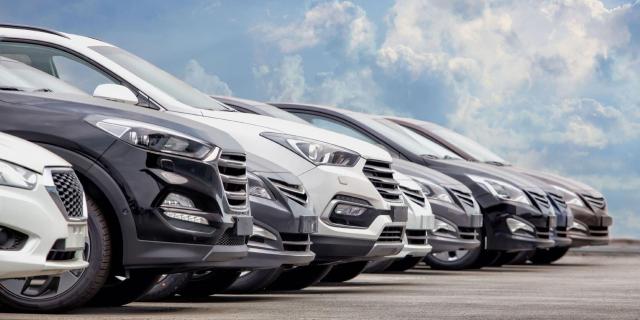Smart city’s zijn niets zonder data. Die ontcijferen ze om het steeds veranderende digitale, sociale en mobiele landschap te beheren. Ze passen zich voortdurend aan om de groei te bevorderen en de levenskwaliteit te verbeteren. Daarvoor moeten ze soms ingrijpende, onpopulaire maatregelen nemen, die de boeiende, digitale slimme mobiliteit steunen of juist inperken.
- De superblokken in Barcelona beperken het plaatselijke verkeer om ruimte vrij te maken voor fietsers en recreatie. Het programma zorgde voor schonere lucht en daarmee voor een lager sterftecijfer, een hogere levensverwachting en nog veel meer voordelen.
- London Datastore, de enorme open database van de Britse hoofdstad, helpt start-ups en gevestigde bedrijven om slimme diensten te ontwikkelen, van transporttracering tot luchtkwaliteitkaarten.
- Waze is een app van Google waarin gebruikers verkeersinfo met elkaar delen. De stad Gent liet zich erdoor inspireren om haar straten te herstructureren. Het resultaat? 30% minder verkeersongevallen, 27% meer fietsers en 15% meer passagiers in het openbaar vervoer.
- Met een nieuwe wet verplichtte de Finse regering alle mobiliteitsleveranciers van het land ertoe om samen te werken door verder te bouwen op elkaars diensten.
- Singapore raadt inwoners af een eigen auto te kopen, maar ondersteunt multimodaliteit, autodelen en andere slimme mobiliteitsoplossingen.
Lees hieronder meer (enkel in het Engels).
What is a Smart City, and what is its impact on Smart Mobility?
Smart Cities are already here, and they are not necessarily the ones that reach for the skies with their glass towers.
The smart part of the city might not be easily seen by the naked eye at all.
Smart Cities are data powerhouses, 'crunching numbers' to manage the ever-changing digital, social and transport ecosystems.
The data comes from power grids, water and air systems, businesses, citizens, transport and its infrastructure.
All this information helps Smart Cities endlessly adapt, supporting growth and improving quality of life (air quality, traffic, congestion, road safety etc….), sustainability and environment.
Santander, a North-Spanish port city is playing the role of Europe’s Smart City Laboratory.
The city houses 12,000 sensors, monitoring parking, traffic, trash accumulation and collection. The latter has reduced the city garbage costs by 20%.
Started as a research project by a local university, innovation now attracts “tech tourists” from around the world.
The city now saves 25% of its energy costs, thanks to a responsive lighting system.
Though critics warn against overzealous connectivity, Santander clearly benefits from being Smart City.
Bold, even unpopular moves, like closing entire streets to motorised traffic, have been the hallmark of Smart Cities.
Barcelona's Superblocks have been widely criticised by sceptics but the results of the experiment speak for themselves.
The project focused on data-driven partitioning of the city to create pedestrianised car-free zones with traffic directed along the perimeter.
Up to 9 residential blocks at a time were turned into mixed-use areas, limiting and slowing local traffic, freeing up space for cycling and recreation.
Superblocks have helped clean up the city's air, leading to a decrease in mortality rates, an increase in life expectancy and multiple other benefits.
London, another data-driven metropolis, is an example of how developments in mobility make a city balance tradition and innovation.
Monitored traffic control, a highly connected public transport, dockless bikes, car-sharing, ride-sharing and ride-hailing - Smart Mobility plays a big part in Britain's capital.
Many of these services are interconnected through apps, contactless payment systems and subscription services, aided by London Datastore - the city's large open data repository.
Governmental systems aren’t the only data libraries that make cities better. Various user-powered initiatives have sprung up to help cities improve.
DansMaRue in Paris and Bos:311 in Boston, USA, let city-dwellers report littering, improper parking and other issues, and track them to completion.
The need for such community and tech-driven collaborative services is stark.
Vigilo, an app from Montpellier, France, largely designed for cyclists and pedestrians, allowing them to inform and indicate the difficulties they meet during their trips in city center or in city ( obstructing objects or cars, lack of maintenance, poor design of roadside etc…) has now spread nationally.
Cyclists, pedestrians and other stakeholders add around 100 reports a day, using phone cameras and comments to suggest improvements.
Even Waze, Google’s popular navigation software, has become an important community contribution platform.
Via Waze, citizens can report traffic accidents, road obstructions and many more traffic issues.
Based on Waze’s data, cities have started re-evaluating road layouts and even public transport.
The Belgian city of Ghent has seen its accidents decrease by 30%, cycling increase by 27% and public transport gain 15% in ridership.
These were the results of the city using Waze’s data to drive the closure of 14 roads, changing 1,800 traffic signs, adding 5 pedestrian areas, among other things.
Cities all over the world are embracing Smart Mobility, playing the balancing game with personal, public and shared transportation.
Singapore, often considered the world's smartest city, has long adopted a harsh stance on car ownership with its Certificate of Entitlement (COE).
Although owning a personal vehicle in Singapore is a luxury, the city offsets this by facilitating a wide range of Smart Mobility options.
It is not surprising that the city-state is home to Southeast Asia's largest ride-hailing start-up, Grab, and many car-sharing services.
Smart Cities have an obligation to their constituents to keep the new technologies in check with adequate policy and regulations.
It is London where Uber's license was suspended, prompting a re-evaluation in the company's safety systems and ecological plans.
After finding that ride-hailing contributes to congestion, London has regulated Uber and its peers and allowed dockless cycling and car-sharing schemes to thrive.
Truly ground-breaking results are achieved when governments and Smart Mobility operators work together to shape the vision of their cities.
The government of Finland, empowered by mobility innovations within its capital, Helsinki, has passed an unprecedented piece of legislation.
"The Act on Transport Services creates preconditions for the digitalisation of transport and for new business models." - Ministry of Transport and Communications.
The act mandates that every player in the Finnish mobility sector has to have an open API available for other companies to build upon.
Helsinki has focused on multimodality for quite some time, and this law, passed in 2018, is set to accelerate the city's move away from private cars.
Today, those living in the city can ride on bikes, public transport, taxis and even shared cars, all through a single app, Whim. There even is a monthly subscription.
Smart Mobility is at the centre of any Smart City, but it also takes foresight to boldly break conventions, and take the political and financial risks to truly make a difference.
How does your city handle Smart Mobility?




